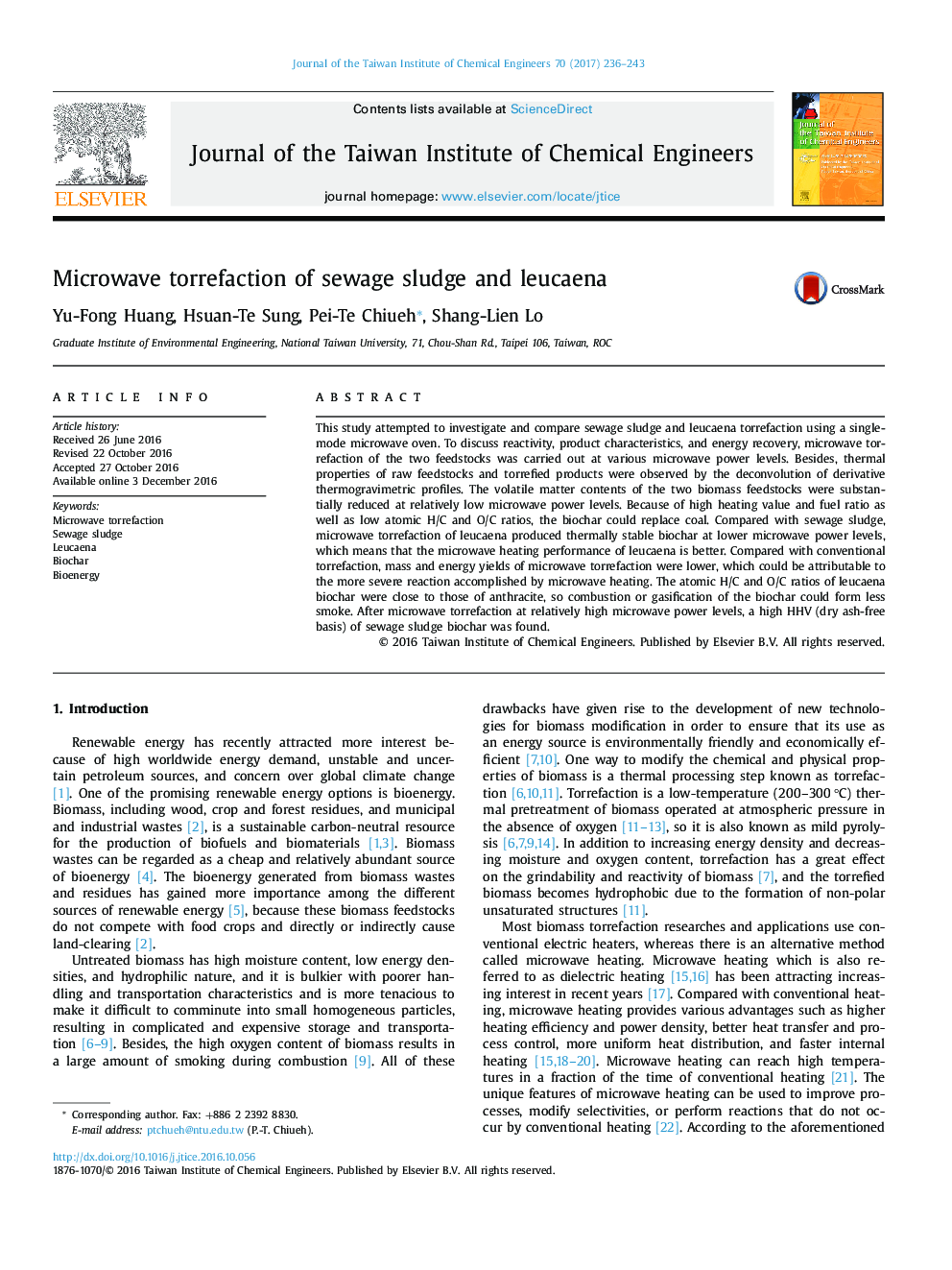| Article ID | Journal | Published Year | Pages | File Type |
|---|---|---|---|---|
| 4998904 | Journal of the Taiwan Institute of Chemical Engineers | 2017 | 8 Pages |
â¢Biochar with high heating value and fuel ratio was produced.â¢Atomic H/C and O/C ratios of biochar were close to those of anthracite.â¢HHV (dry ash-free basis) of sewage sludge biochar was up to 48 MJ/kg.â¢Leucaena torrefaction produced stable biochar at low microwave power levels.â¢Deconvolution of DTG profiles was performed.
This study attempted to investigate and compare sewage sludge and leucaena torrefaction using a single-mode microwave oven. To discuss reactivity, product characteristics, and energy recovery, microwave torrefaction of the two feedstocks was carried out at various microwave power levels. Besides, thermal properties of raw feedstocks and torrefied products were observed by the deconvolution of derivative thermogravimetric profiles. The volatile matter contents of the two biomass feedstocks were substantially reduced at relatively low microwave power levels. Because of high heating value and fuel ratio as well as low atomic H/C and O/C ratios, the biochar could replace coal. Compared with sewage sludge, microwave torrefaction of leucaena produced thermally stable biochar at lower microwave power levels, which means that the microwave heating performance of leucaena is better. Compared with conventional torrefaction, mass and energy yields of microwave torrefaction were lower, which could be attributable to the more severe reaction accomplished by microwave heating. The atomic H/C and O/C ratios of leucaena biochar were close to those of anthracite, so combustion or gasification of the biochar could form less smoke. After microwave torrefaction at relatively high microwave power levels, a high HHV (dry ash-free basis) of sewage sludge biochar was found.
Graphical abstractDownload high-res image (194KB)Download full-size image
